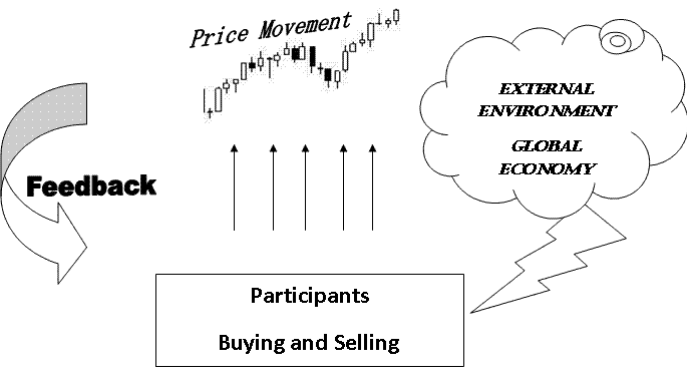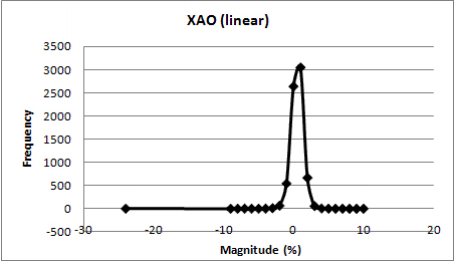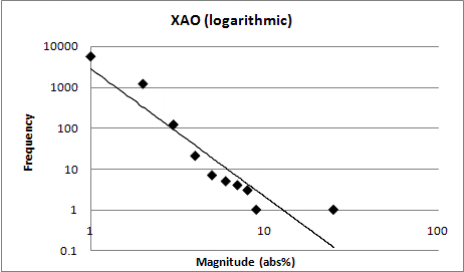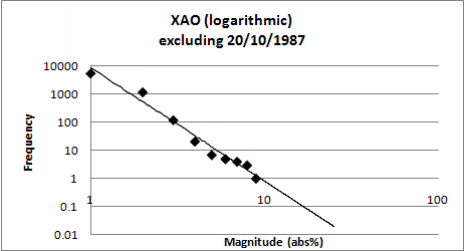- Active Investing - what is it?
- All Weather Trading Plan using Complex Theory (Parts 1 - 4)
- Asset Management (Parts 1 - 4)
- Back Testing
- Breaking out from consolidation
- Breakout trading in all market conditions
- Charting in a Nutshell
- Children of the Bear
- Fibonacci and the Golden Ratio
- Going Public
- Hull Moving Average
- MACD Breakout Trading (Parts 1 - 2)
- Making decisions with a Simple Moving Average
- Probability: do you have the stomach for it?
- Profit Taking
- Relative Strength
- Record Keeping
- Risky Business
- Short Selling
- Social Media Bubble
- Switching Gears
- Rate of Return indicator
- Time and Money
- Tools of the Trade
- Trade Warrants (Parts 1 - 4)
- Trading without spending money
- Trendlines
- Triangles
- GMMA's on Weekly Charts
- Writing Custom Indicators
Articles include:
This series of articles is based on the general trading plan submitted to me by Janice Korevaar (janicekorevaar@bigpond.com), one of my students who has demonstrated an exceptionally thorough understanding of financial markets as complex adaptive systems through these writings... Alan Hull
The stock market is a network of interactions that has certain characteristics that are indicative of other complex systems that exist in nature.
Based on these characteristics, current market phases and trends can be identified and traded using techniques best suited to that phase.
These phases often have long time frames (years) and sometimes the next phase can be anticipated.
- The discussion includes:
- Characteristics of complex systems including the stock market
- Different phases and trends that occur in the stock market
- Transition phases
- Low Market Activity (trendless)
- High Market Activity (volatility)
- Complex Phases
- Channel Trends (stable long term trend)
- Fan Trends (less stable, boom trend)
- Transition phases
- Methods for trading different phases and trends
- Global and Local Environment
- Channel Trading
- Fan Trading
- Fractals
- Non-periodic behaviour
- The Butterfly Effect
- Wave theory
- Bifurcation
- Short Trading
- Triangle Trading
- Anticipating future phases
- Theory of Alternation
- Inflection Points
- Universality
Introduction
A man plays on a beach with his children. He plays with his children because he has caught enough fish for their dinner that night. The children are happy to play with their father but sometimes they wish they had other toys to play with or a school to go to or maybe even a house to live in.The children dream that when they grow up they will do more than their father. They would like to live prosperous lives in a community with houses and schools, and still have time to play with their own children. Perhaps they will form fishing companies, list on the stock market and use the capital to grow their businesses.
By working together the children will help to build an economy.
The children become participants in the economy and they do so for their own purposes. They know that a few fish will always remain a few fish but a few thousand fish could mean a seafood restaurant. This business will help other businesses and so on. Thus the economy benefits from the participants, but also the participants benefit from the economy. This is a win-win situation that makes the whole economy more than the sum of the individual parts.
In a similar manner, animals, insects and plants interact together within an ecosystem and collectively help each other (as species) to survive. The animals do not knowingly contribute to the survival of the ecosystem. Each species behaves in a way that is beneficial to them. But a consequence of their interactions is that the system balances and adapts and provides long-term survival for the whole ecosystem.
These types of systems are called complex adaptive systems. They are made up of many interacting participants but their collective outcome has certain qualities that benefit the group and its participants.
Complex Adaptive Systems
The interactions that occur between participants in a complex system are essentially very simple interactions. In a predator-prey system, one animal eats another. However, the net result from all the eating is that the population levels are influenced by two things. Firstly there is feedback; too little or too much eating will mean more or less food for the next generation. This internal feedback allows the system to balance and adapt.The second influence is from external forces; the environment. The weather, for example, could cause both predator and prey populations to flourish or subside. Together these forces (feedback and environment) allow the whole system to change and adapt and find balance with itself and to its environment.
The economy can be seen as a complex adaptive system with interactions between businesses and consumers. These interactions have feedback components such as businesses adapting to consumer needs. There are also the external environmental effects from the surrounding local and global economy.
The stock market, which is related to the economy, is also a complex adaptive system. In the stock market the participants are traders and investors. These participants interact with each other by simply buying and selling shares from one another for their own benefit.
The outcome from the buying and selling is price movement. The participants often react to price movement and thus provide feedback in the stock market. They also react to the environment; the local and global economy.
Figure 1 illustrates both the feedback to the price movement and the external influence from the global economy. As a collective system, the market changes and adapts to itself and its environment. This means survival... for the economy at least.

Figure 1: Complex Adaptive System - The Stock Market
Of course, there could be horrendous circumstances, which may cause the economy to totally dissolve just as too many feral animals upset a balanced ecosystem; but for the most part economies cycle in a sustainable stable fashion for decades.
So how can we, as participants in the stock market, ensure survival for ourselves?
Predictability of Complex Systems
It would be great if the two influences (feedback and environment) enabled the outcomes from a complex system (e.g. price movement) to be predictable. Unfortunately, the internal behaviour of the stock market is not linear and cannot be analysed using standard statistical approaches.Benoit Mandelbrot1 (an American mathematician) discovered this fact when analysing cotton data in the 1960's. The same analysis is done here using the Australian All Ordinaries (XAO). Figure 2 is a graph of the XAO's daily fluctuations (%) since 1980. It shows the number of fluctuations (frequency) versus the magnitude of those fluctuations on a linear scale. The data does not produce a smooth statistical "bell" shape but rather a sharp, steep spike.

Figure 2: Australian All Ordinaries 1980 - 2007 Daily Movements
This spike shows that there are a very large number of small movements. In fact, more than 80% of daily movements are less than 1% in magnitude. The long low sides of the graph show that there are very few large movements but also, interestingly, very few intermediate movements.
This is typical of other complex systems such as earthquakes2, which show the same thing when frequency and magnitude are plotted on a linear scale. However, when earthquake data is plotted on a log-log scale the result is a nice straight line (remember the Richter scale is a log scale to begin with). By plotting the stock market data on a log-log scale the same sort of straight line is achieved, see Figure 3. This graph uses absolute values since you cannot take the log of a negative number.

Figure 3: Australian All Ordinaries Daily Fluctuations (Log scale)

Figure 4: XAO Daily Fluctuations excluding 20th October 1987
Note: the dot on the far right of Figure 3 is the 25% drop that occurred on 20th October 1987. A much better correlation is achieved by taking that single data point out, see Figure 4.
This straight line on the log-log graph means that the stock market is not linear but is termed non-linear and follows a "power law". This sounds exciting to see some order in the stock market data. It is great to see a relationship and that the data follows a "law". However, plotting data in these graphs only shows how past fluctuations can be collated. It does not mean we can predict the magnitude of the next earthquake or the next stock market correction. It will give us a clue of the likelihood of a large correction happening but not when it will occur.
However, do not be too discouraged. It does show that stock market data behaves as other natural processes do and, in particular, confirms that the market is a non-linear system called a complex adaptive system.
1 http://www.math.yale.edu/mandelbrot go to Reviews of The (Mis)behaviour of Markets [Doc]
2 Page 140 John Gribbin, Deep Simplicity (Penguin Books, London, 2005)
|